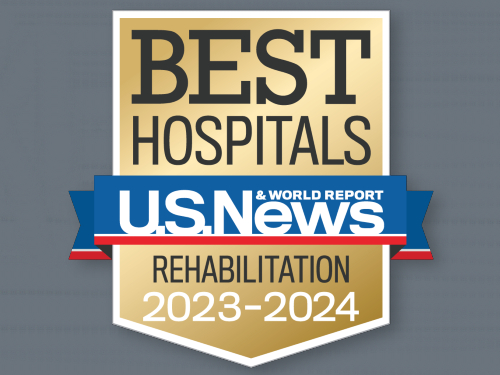The National Institute on Minority Health and Health Disparities defines health disparities as differences in the incidence, prevalence, mortality and burden of diseases and other adverse health conditions that exist among specific population groups, such as racial/ethnic minorities, those of low socioeconomic backgrounds and rural persons, determined by the United States Public Law P.L. 106-525, also known as the Minority Health and Health Disparities Research and Education Act of 2000.1 Several factors may contribute to racial and ethnic health disparities in the U.S., such as social environment, insurance status, socio-economic status and service accessibility.2 In addition, language barriers may exacerbate the health disparity evident in certain ethnic/racial groups, such as the Spanish-speaking population. Health disparities are costly to the health care system3 and addressing disparities in access, care and outcomes after traumatic brain injury (TBI)4 should be a vital concern to the rehabilitation medicine community.

Major life activities of persons with TBI are often limited due to the serious cognitive, behavioral, emotional and physical impairments associated with injury.5-9 Ethnic minorities and those who are of socio-economically disadvantaged backgrounds are at a greater risk of sustaining a TBI,10 with blacks and Latinos/Hispanics having the greatest risk.11, 12 Few studies assess the post-TBI outcomes and needs of ethnic minorities with TBI. Black and Hispanic persons with TBI have reported poorer functional outcomes and community integration, are less likely to receive rehabilitation services after TBI, and are less likely to be employed post injury.4
Race/ethnicity and English-language proficiency significantly affect the functional outcomes of Hispanics and Spanish-speaking persons with TBI.13 Spanish-speaking Latinos reported greater need of assistance with daily functioning with increasing time after injury.14 In addition, studies have found that limited access to brain injury rehabilitative services is more prominent in rural areas and among ethnic minorities.15-20 By assessing the access to care needs of Spanish-speaking persons with TBI, one of the many social determinants of health may be addressed in this population.
Through the TIRR Memorial Hermann Rehabilitation Innovations Grant Program, I was awarded a grant for my project entitled “Perceptions of Resource Availability and Accessibility in Spanish-speaking Persons with TBI and Their Caregivers” to address health disparities among Spanish-speaking persons with TBI. The study will explore the experiences and perceptions regarding their resource or service needs after TBI, knowledge of available resources and services, and accessibility of resources and services, with emphasis on the utilization of technology to locate needed services and resources. The study also aims to assess the perceived adequacy of resources, the unique needs of caregivers, and the level of caregiver burden among Spanish-speaking caregivers of persons with TBI.
This study was developed after I noticed that many Spanish-speaking individuals with TBI lacked awareness of available resources, were not eligible for needed services due to their funding and/or residency status, and failed to attend their scheduled follow-up appointments. In a previous study conducted by myself and TIRR Memorial Hermann colleagues, Spanish-speaking persons with TBI identified the following key barriers during their recovery process after TBI: decreased working abilities and social integration, difficulty obtaining medical care, stigma and fears of sustaining an additional TBI.21 Therefore, this study, which aims to identify perceived needs and resource knowledge of persons with TBI and their caregivers, will serve as a needs assessment to prepare for the future development of a federally funded program aimed to increase service utilization and decrease barriers to care for persons with TBI and their families. Furthermore, I will be partnering with the Hispanic Health Coalition in the development and dissemination of Spanish-language educational materials for persons with TBI and their caregivers. More research and educational efforts still need to be done to help improve the health and eliminate health disparities of persons with disabilities. I am committed along with other TIRR researchers to help address this concern through our research, dissemination, community outreach and public health efforts.
Dr. Monique R. Pappadis is an investigator at the Brain Injury Research Center at TIRR Memorial Hermann and an adjunct professor of social work in the University of Houston’s Graduate College of Social Work.
1 United States Public Law 106-525. 2000;2498.
2 Centers for Disease Control and Prevention. Health disparities experienced by racial/ethnic minority populations. Morbidity and Mortality Weekly Report. 2004;53:755.
3 LaVeist TA, Gaskin DJ, Richard P. The Economic Burden of Health Inequities in the United States. Joint Center for the Political and Economic Studies: Washington, DC. 2009.
4 Gary KW, Arango-Lasprilla JC, Stevens LF. Do racial/ethnic differences exist in post-injury outcomes after TBI?: A comprehensive review of the literature. Brain Injury. 2009;23(10),775-789.
5 McKinlay WW, Watkiss AJ. Cognitive and behavioral effects of brain injury. In: Rosenthal, M., Griffith, E. R., Kreutzer, J. S., & Pentland, B. (Eds.). Rehabilitation of the Adult and Child with Traumatic Brain Injury. 3rd edition. Philadelphia: F. A. Davis Company. 1999;74-86.
6 Curran CA, Ponsford JL, Crowe S. Coping strategies and emotional outcome following traumatic brain injury: A comparison with orthopedic patients. Journal of Head Trauma Rehabilitation. 2000;15(6),1256-1274.
7 Hibbard MR, Ashman TA, Spielman LA, Chun D, Charatz HJ, Melvin S. Relationship between depression and psychosocial functioning and health after traumatic brain injury. Archives of Physical Medicine and Rehabilitation. 2004;85,S43-53.
8 Sander AM, Kreutzer J, Rosenthal M, Delmonico R, Young ME. A multicenter longitudinal investigation of return to work and community integration following traumatic brain injury. Journal of Head Trauma Rehabilitation. 1996;11,70-84.
9 Selassie AW, Zaloshnja E, Langlois JA, et al. Incidence of long-term disability following traumatic brain injury hospitalization, United States, 2003. Journal of Head Trauma Rehabilitation. 2008;23(2),123-131.
10 Langlois JA, Rutland-Brown W, Thomas KE. Traumatic brain injury in the United States: Emergency department visits, hospitalizations, and deaths. Atlanta, GA: Centers for Disease Control and Prevention, National Center for Injury Prevention and Control. 2006.
11 Adekoya N, Thurman D, White D, Webb K. Surveillance for traumatic brain injury deaths-United States, 1989-1998. MMWR Surveillance Summaries. 2002;51(10),1-16.
12 Jager TE, Weiss HB, Coben JH, Pepe PE. Traumatic brain injuries evaluated in U.S. emergency departments, 1992-1994. Academic Emergency Medicine. 2000;7(2),134-140.
13 Marquez de la Plata C, Hewlitt M, de Oliveira A, Hudak A, Harper C, Shafi S, Diaz-Arrastia R. Ethnic differences in rehabilitation placement and outcome after TBI. Journal of Head Trauma Rehabilitation. 2007;22,113–121.
14 Jamison L, Kolakowsky-Hayner S, Wright J. Preliminary investigation of longitudinal sociodemographic, injury and psychosocial characteristics in a group of non-English speaking Latinos with brain injury. Journal of Head Trauma Rehabilitation. 2012;26(6); 805-813.
15 Brown ER, Ojeda VD, Wyn R, Levan R. Racial and Ethnic Disparities in Access to Health Insurance and Health Care. UCLA Center for Health Policy Research and The Henry J. Kaiser Family Foundation; April 2000.
16 The Henry J. Kaiser Family Foundation. Key Health and Health Care Indicators by Race/Ethnicity and State. Washington, DC; 2009 update.
17 US Census Bureau. Small Area Health Insurance Estimates, US Department of Commerce, 2012.
18 Institute of Medicine. America’s Uninsured Crisis: Consequences for Health and Health Care. Washington, DC; February 24, 2009.
19 Johnstone B, Nossaman LD, Schopp LH, Holmquist L, Rupright SJ. Distribution of services and supports for people with traumatic brain injury in rural and urban Missouri. The Journal of Rural Health. 2002;18,109-117.
20 Institute of Medicine. Unequal Treatment: Confronting Racial and Ethnic Disparities in Health Care. Washington, DC; March 20, 2002.
21 Pappadis MR, Sander, AM, Mazzei DM. Soy diferente: Experiences of Spanish-speaking persons with traumatic brain injury. Poster presented at the 2012 Race, Ethnicity, and Disabilities: State of the Science Conference, March 1-2, Arlington, VA.
